For the 2025 school year, there are 2 public preschools serving 630 students in Waterford School District. This district's average pre testing ranking is 7/10, which is in the top 50% of public pre schools in Connecticut.
Public Preschools in Waterford School District have an average math proficiency score of 62% (versus the Connecticut public pre school average of 35%), and reading proficiency score of 65% (versus the 42% statewide average).
Minority enrollment is 27% of the student body (majority Hispanic), which is less than the Connecticut public preschool average of 59% (majority Hispanic).
Overview
This School District
This State (CT)
# Schools
5 Schools
345 Schools
# Students
2,232 Students
132,954 Students
# Teachers
199 Teachers
10,546 Teachers
Student : Teacher Ratio
11:1
11:1
District Rank
Waterford School District, which is ranked within the top 50% of all 197 school districts in Connecticut (based off of combined math and reading proficiency testing data) for the 2021-2022 school year.
The school district's graduation rate of 90-94% has decreased from 93% over five school years.
Overall District Rank
#78 out of 200 school districts
(Top 50%)
(Top 50%)

Math Test Scores (% Proficient)
51%
40%
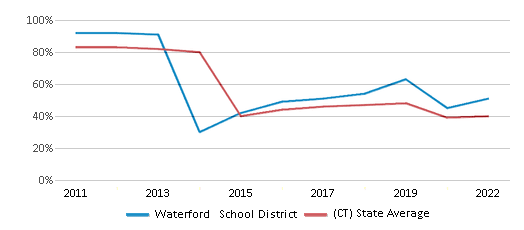
Reading/Language Arts Test Scores (% Proficient)
62%
50%
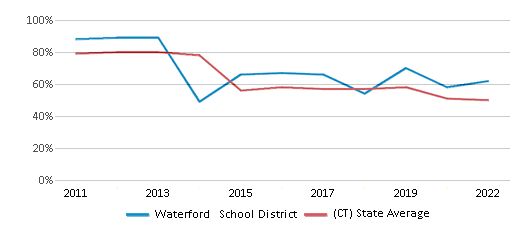
Science Test Scores (% Proficient)
58%
47%
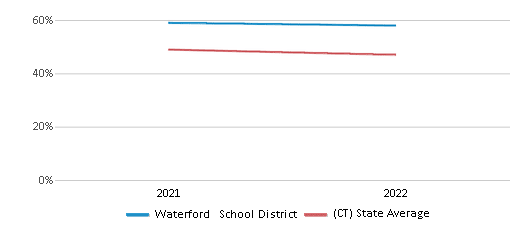
Graduation Rate
90-94%
89%

Students by Ethnicity:
Diversity Score
0.47
0.70
# American Indian Students
5 Students
381 Students
% American Indian Students
n/a
n/a
# Asian Students
115 Students
6,332 Students
% Asian Students
5%
5%
# Hispanic Students
331 Students
44,965 Students
% Hispanic Students
15%
34%
# Black Students
56 Students
19,832 Students
% Black Students
3%
15%
# White Students
1,590 Students
54,707 Students
% White Students
71%
41%
# Hawaiian Students
8 Students
132 Students
% Hawaiian Students
n/a
n/a
# Two or more races Students
125 Students
6,568 Students
% of Two or more races Students
6%
5%
Students by Grade:
# Students in PK Grade:
-
14,518
# Students in K Grade:
181
19,819
# Students in 1st Grade:
143
19,906
# Students in 2nd Grade:
172
20,278
# Students in 3rd Grade:
158
15,997
# Students in 4th Grade:
147
16,056
# Students in 5th Grade:
170
13,209
# Students in 6th Grade:
175
5,100
# Students in 7th Grade:
181
3,978
# Students in 8th Grade:
192
3,865
# Students in 9th Grade:
170
67
# Students in 10th Grade:
197
64
# Students in 11th Grade:
180
43
# Students in 12th Grade:
166
54
# Ungraded Students:
-
-
District Revenue and Spending
The revenue/student of $30,951 is higher than the state median of $26,157. The school district revenue/student has stayed relatively flat over four school years.
The school district's spending/student of $28,653 is higher than the state median of $25,225. The school district spending/student has stayed relatively flat over four school years.
Total Revenue
$69 MM
$12,920 MM
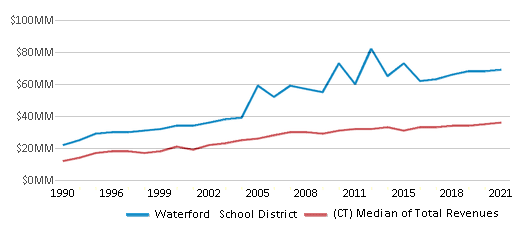
Spending
$64 MM
$12,459 MM

Revenue / Student
$30,951
$26,157
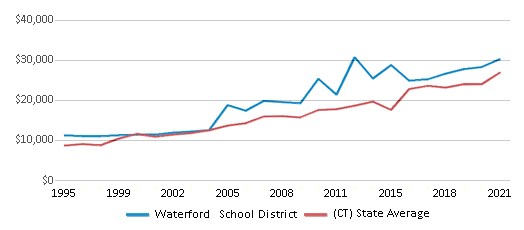
Spending / Student
$28,653
$25,225
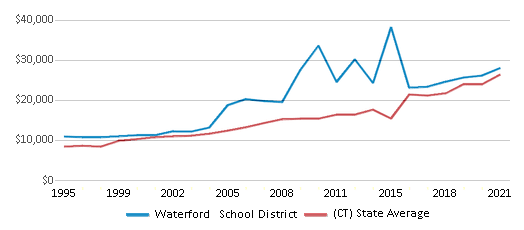
Best Waterford School District Public Preschools (2025)
School
(Math and Reading Proficiency)
(Math and Reading Proficiency)
Location
Grades
Students
Rank: #11.
Great Neck Elementary School
(Math: 65-69% | Reading: 65-69%)
Rank:
Rank:
9/
Top 20%10
165 Great Neck Rd.
Waterford, CT 06385
(860) 442-2593
Waterford, CT 06385
(860) 442-2593
Grades: PK-5
| 334 students
Rank: #22.
Oswegatchie Elementary School
(Math: 55-59% | Reading: 60-64%)
Rank:
Rank:
7/
Top 50%10
470 Boston Post Rd.
Waterford, CT 06385
(860) 442-4331
Waterford, CT 06385
(860) 442-4331
Grades: PK-5
| 296 students
Recent Articles

Year-Round Or Traditional Schedule?
Which is more appropriate for your child? A year-round attendance schedule or traditional schedule? We look at the pros and cons.

Why You Should Encourage Your Child to Join a Sports Team
Participating in team sports has a great many benefits for children, there is no doubt. In this article you will learn what those benefits are.

White Students are Now the Minority in U.S. Public Schools
Increasing birth rates among immigrant families from Asia and Central and South America, combined with lower birth rates among white families, means that for the first time in history, public school students in the United States are majority-minority. This shift in demographics poses difficulties for schools as they work to accommodate children of varying language abilities and socio-economic backgrounds.





